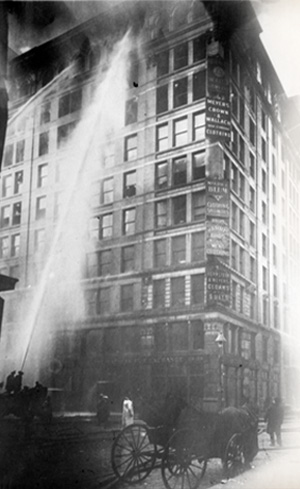1. File the request for hearing on time at the right place. Each time your adjuster sends a letter regarding your medical care or your benefits, appeal rights are included at the end of that letter. A request for hearing form should be included so that you may file an appeal if you disagree with the letter. You have only 70 days to return that request for hearing form to the Hearings Division in either Carson City or Las Office. Do not send the request for hearing form to the adjuster instead of to the Hearings Office address.
2. Educate yourself on the issue you are appealing. If you decide to handle the appeal yourself, and do not want to hire a private attorney to represent you, there is information posted by the Hearings Office on how to represent yourself. The Nevada Attorney for Injured Workers (NAIW) also has a handout you may pick up at their office at 2200 S. Rancho Drive, Las Vegas. I also have a detailed and free Injured Workers’ Guide to Nevada Workers’ Compensation Law. Stop by my office at 1945 E. Warm Springs Road, or call (702) 699-5336, and we will mail one to you. Also check the categories to the left on this blog. I have written blog posts on the most common problems facing injured workers. The complete laws and regulations that apply to claims are on the DIR website. Also, check the articles I’ve written for the Information Center on my website.
3 Get documents that support your position. The biggest mistake people make when representing themselves is not having documentation that supports their position. For example, if you are contesting the insurer’s determination to award you a 3% PPD, you need to show that the 3% is wrong. You might do that by referencing the AMA Guides, or by asking a rating doctor for a second opinion. Or, if you are fighting the insurer’s determination to close your claim, you will need a report from another physician that says that you need more medical care. Otherwise, the hearings officer only has the treating doctor’s opinion that you don’t need more care. You can’t simply show up and complain. You need written proof why your position is the correct one.
4. Attend the hearing in person or by phone. You must be present at the hearing in person if you don’t have a lawyer there to argue your position, or you must make pre-arrangements to give telephone testimony. If you don’t attend, your appeal will be dismissed. You can’t skip this step and later decide to get an attorney to straighten it all out. There is no free legal representation at this level. The NAIW may only provide an attorney to represent you at the next level of appeals if you lose, or if you win and the insurer files an appeal.
5. Carefully decide whether you should be representing yourself. Many attorneys will answer questions and give you valuable information about the legal issue you want to appeal at a free initial meeting. If the issue you are appealing is very important, such as the denial of your claim, you may be better off hiring an attorney to represent you before this hearing. The insurer has a right to appeal a hearings officer’s decision, so you may have to get either an appointed NAIW attorney, or a private attorney to represent you at the next level anyway. If you think you will need help throughout your claim with getting the right medical treatment, getting your benefits paid correctly and on time, or if you are likely to have a permanent impairment, or if you will need retraining, then you may be smart to hire a private attorney now. The primary difference between the NAIW and a private attorney is that the NAIW only represents injured workers on a specific issue at the appeals officer level. A good private attorney should be involved in all aspects of your claim and provide an ongoing valuable service that justifies the fee that will be paid from any settlement. The NAIW reported in the DIR’s Spring 2011 newsletter that in the last six months of 2010, they opened 755 new appeals cases, spread among 6 attorneys in the north, and 8 attorneys in their Las Vegas office. Over 30% of the cases filed at the appeals officer level are assigned to one of the 8 NAIW attorneys in Las Vegas. In comparison, private attorneys may accept or decline to represent a new client if they are too busy or don’t want the case for other reasons.




 People who contact me after getting hurt as a result of an unsafe work condition ask about suing their employer. In this lousy economy many employers are trying to save a buck by not following safety procedures to protect employees from foreseeable accidents.
People who contact me after getting hurt as a result of an unsafe work condition ask about suing their employer. In this lousy economy many employers are trying to save a buck by not following safety procedures to protect employees from foreseeable accidents. 









